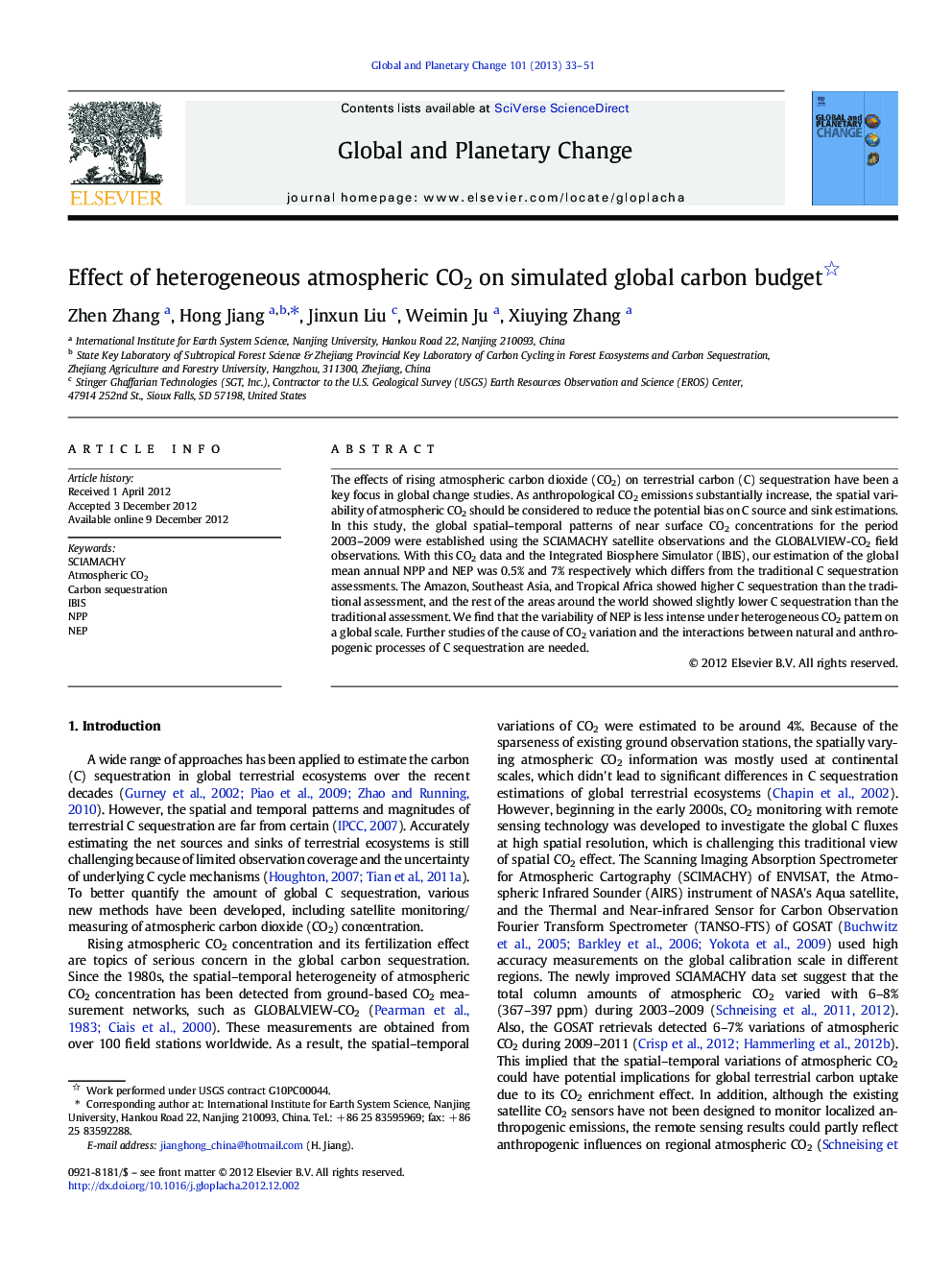| Article ID | Journal | Published Year | Pages | File Type |
|---|---|---|---|---|
| 4463467 | Global and Planetary Change | 2013 | 19 Pages |
The effects of rising atmospheric carbon dioxide (CO2) on terrestrial carbon (C) sequestration have been a key focus in global change studies. As anthropological CO2 emissions substantially increase, the spatial variability of atmospheric CO2 should be considered to reduce the potential bias on C source and sink estimations. In this study, the global spatial–temporal patterns of near surface CO2 concentrations for the period 2003–2009 were established using the SCIAMACHY satellite observations and the GLOBALVIEW-CO2 field observations. With this CO2 data and the Integrated Biosphere Simulator (IBIS), our estimation of the global mean annual NPP and NEP was 0.5% and 7% respectively which differs from the traditional C sequestration assessments. The Amazon, Southeast Asia, and Tropical Africa showed higher C sequestration than the traditional assessment, and the rest of the areas around the world showed slightly lower C sequestration than the traditional assessment. We find that the variability of NEP is less intense under heterogeneous CO2 pattern on a global scale. Further studies of the cause of CO2 variation and the interactions between natural and anthropogenic processes of C sequestration are needed.
► We established the spatial–temporal patterns of near surface CO2 (2003–2009). ► We carried out simulation experiments based on a land process model IBIS. ► Global estimations of NPP and NEP were lower under uneven CO2 patterns. ► Tropical regions showed higher C sequestration than traditional assessment. ► The heterogeneity of atmospheric CO2 is important to carbon budget.
